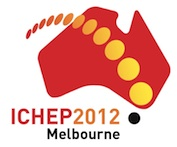Speaker
Dr
Jean-Philippe Lansberg
(Institut de Physique Nucléaire d'Orsay / IN2P3-CNRS (FR))
Description
We discuss the possibility of the conception of a multi-purpose fixed-target experiment with the proton or lead ion LHC beams extracted by bent a crystal. This mature extraction technique offers an ideal way to obtain a clean and very collimated high-energy beam, without altering at all the performance of the LHC [1,2,3]. It has been successfully tested at SPS (450 GeV) and at the Tevatron (900 GeV) and future tests at the LHC are planned (7 TeV).
As simple as it seems, the multi-TeV LHC beams will allow for the most energetic fixed-target experiments ever performed. Such an experiment, tentatively named AFTER for “A Fixed-Target ExperRiment”, gives access to new domains of particle and nuclear physics complementing that of collider experiments [4], in particular that of Brookhaven's Relativistic Heavy Ion Collider (RHIC) and the projects of Electron-ion colliders (EIC). We have already evaluated that the instantaneous luminosity achievable with AFTER using typical targets would surpass that of RHIC by more than 3 orders of magnitude. This provides a quarkonium and heavy-flavour observatory [5] in pp and pA collisions where, by instrumenting the target-rapidity region, gluon and heavy-quark distributions of the proton, the neutron and the nuclei can be accessed at large x and even at x larger than unity in the nuclear case. The fixed-target mode also has the advantage to allow for spin measurements with polarized target and for an access over the full backward rapidity domain up to x_F ~ -1. The nuclear target-species versatility provides a unique opportunity to study nuclear matter versus the features of the hot and dense matter formed in heavy-ion collisions, including the formation of the quark-gluon plasma. During the one-month lead runs, PbA collisions can be studied at a luminosity comparable to that of RHIC and the LHC over the full range of target-rapidity domain with a large variety of nuclei. Modern detection technology should allow for the study of quarkonium excited states, in particular the chi(c) and chi(b) resonances, even in the challenging high-multiplicity environment of pA and PbA collisions, thanks to the boost of the fixed-target mode. We will discuss a tentative design for AFTER, and report the projected detector performances from the first preliminary simulations.
Primary authors
Andry Malala Rakotozafindrabe
(CEA - Centre d'Etudes de Saclay (FR))
Bernard Genolini
(IPN Orsay - Paris Sud U. / IN2P3-CNRS)
Cynthia Hadjidakis
(IPN Orsay - Paris Sud U. / IN2P3-CNRS)
Elena Gonzalez Ferreiro
(Universidad de Santiago de Compostela)
Enrico Scomparin
(Universita e INFN (IT))
Frédéric Fleuret
(LLR Ecole Polytechnique, IN2P3/CNRS)
Dr
Jean-Philippe Lansberg
(Institut de Physique Nucléaire d'Orsay / IN2P3-CNRS (FR))
Jean-Pierre Didelez
(IPN Orsay - Paris Sud U. / IN2P3-CNRS)
Philippe Rosier
(IPN Orsay - Paris Sud U. / IN2P3-CNRS)
Roberta Arnaldi
(Universita e INFN (IT))
Stanley J. Brodsky
(SLAC)
Ulrik I. Uggerhoej
(University of Aarhus)
Valerie Chambert
(IPN Orsay - Paris Sud U. / IN2P3-CNRS)




